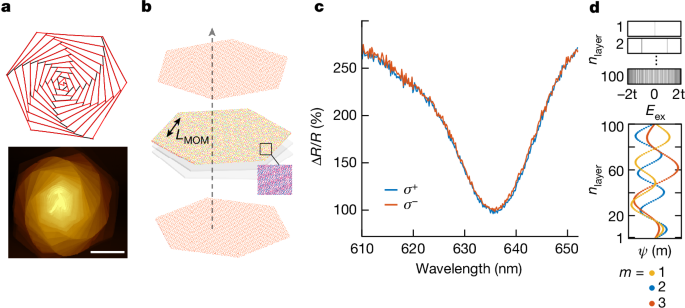Brain goop that traps hunger neurons drives obesity
https://www.nature.com/articles/d41586-024-03025-w
A mechanism for metabolic disease is traced to a defective cellular scaffolding that holds together the brain’s hunger cells.
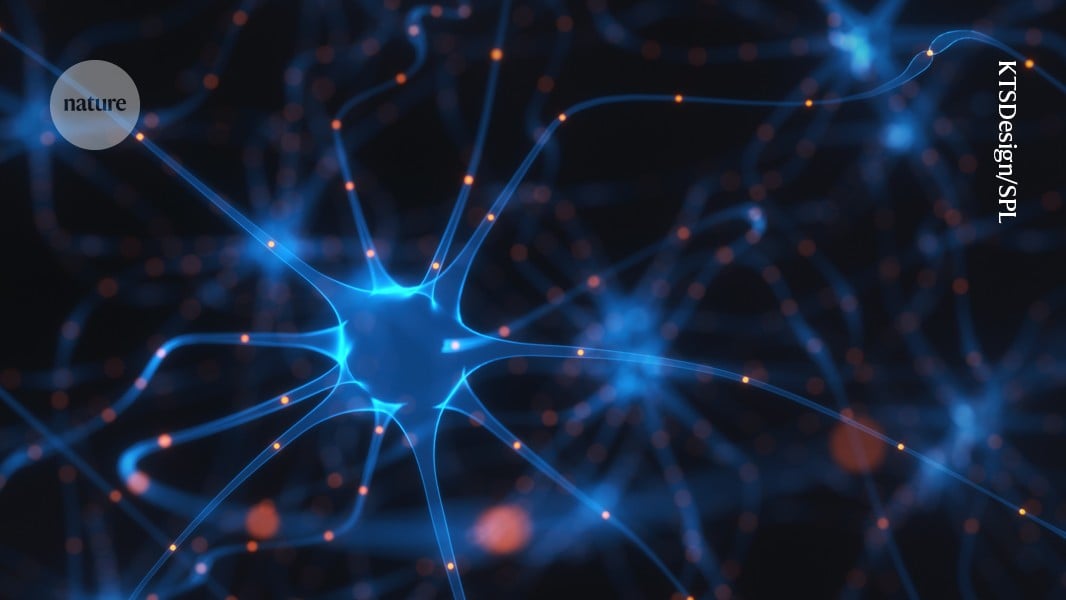
Micronuclear battery based on a coalescent energy transducer | Nature
https://www.nature.com/articles/s41586-024-07933-9
Micronuclear batteries harness energy from the radioactive decay of radioisotopes to generate electricity on a small scale, typically in the nanowatt or microwatt range1,2. Contrary to chemical batteries, the longevity of a micronuclear battery is tied to the half-life of the used radioisotope, enabling operational lifetimes that can span several decades3. Furthermore, the radioactive decay remains unaffected by environmental factors such as temperature, pressure and magnetic fields, making the micronuclear battery an enduring and reliable power source in scenarios in which conventional batteries prove impractical or challenging to replace4. Common radioisotopes of americium (241Am and 243Am) are α-decay emitters with half-lives longer than hundreds of years. Severe self-adsorption in traditional architectures of micronuclear batteries impedes high-efficiency α-decay energy conversion, making the development of α-radioisotope micronuclear batteries challenging5,6. Here we propose a micronuclear battery architecture that includes a coalescent energy transducer by incorporating 243Am into a luminescent lanthanide coordination polymer. This couples radioisotopes with energy transducers at the molecular level, resulting in an 8,000-fold enhancement in energy conversion efficiency from α decay energy to sustained autoluminescence compared with that of conventional architectures. When implemented in conjunction with a photovoltaic cell that translates autoluminescence into electricity, a new type of radiophotovoltaic micronuclear battery with a total power conversion efficiency of 0.889% and a power per activity of 139 microwatts per curie (μW Ci−1) is obtained. A micronuclear battery is built based on an autoluminescent americium–terbium compound that couples radioisotopes with energy transducers at the molecular level, resulting in an 8,000-fold enhancement in energy conversion efficiency.
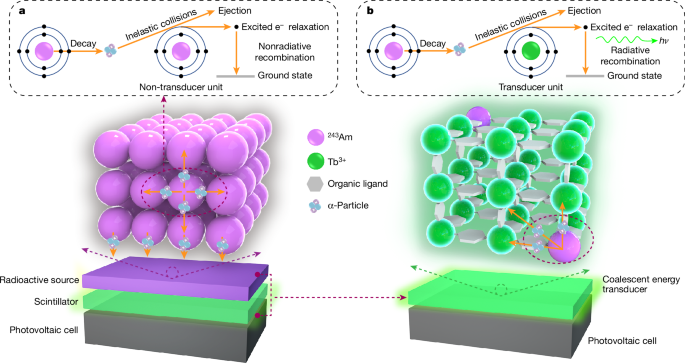
Targeted protein relocalization via protein transport coupling | Nature
https://www.nature.com/articles/s41586-024-07950-8
Subcellular protein localization regulates protein function and can be corrupted in cancers1 and neurodegenerative diseases2,3. The rewiring of localization to address disease-driving phenotypes would be an attractive targeted therapeutic approach. Molecules that harness the trafficking of a shuttle protein to control the subcellular localization of a target protein could enforce targeted protein relocalization and rewire the interactome. Here we identify a collection of shuttle proteins with potent ligands amenable to incorporation into targeted relocalization-activating molecules (TRAMs), and use these to relocalize endogenous proteins. Using a custom imaging analysis pipeline, we show that protein steady-state localization can be modulated through molecular coupling to shuttle proteins containing sufficiently strong localization sequences and expressed in the necessary abundance. We analyse the TRAM-induced relocalization of different proteins and then use nuclear hormone receptors as shuttles to redistribute disease-driving mutant proteins such as SMARCB1Q318X, TDP43ΔNLS and FUSR495X. TRAM-mediated relocalization of FUSR495X to the nucleus from the cytoplasm correlated with a reduction in the number of stress granules in a model of cellular stress. With methionyl aminopeptidase 2 and poly(ADP-ribose) polymerase 1 as endogenous cytoplasmic and nuclear shuttles, respectively, we demonstrate relocalization of endogenous PRMT9, SOS1 and FKBP12. Small-molecule-mediated redistribution of nicotinamide nucleotide adenylyltransferase 1 from nuclei to axons in primary neurons was able to slow axonal degeneration and pharmacologically mimic the genetic WldS gain-of-function phenotype in mice resistant to certain types of neurodegeneration4. The concept of targeted protein relocalization could therefore inspire approaches for treating disease through interactome rewiring. Targeted protein relocalization using shuttle proteins with potent ligands amenable to incorporation into targeted relocalization activating molecules could be used to regulate cellular physiology and correct disease states in neurodegenerative diseases, cancer and genetic disorders.
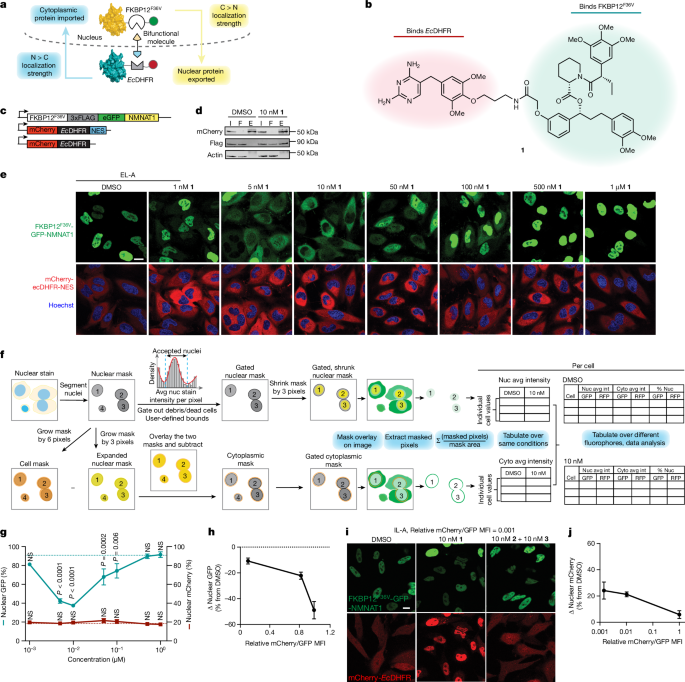
Obesity-drug pioneers win prestigious Lasker Award for medical science
https://www.nature.com/articles/d41586-024-03078-x
Three scientists are honoured for developing a class of blockbuster weight-loss drugs. Is a Nobel prize on the way?

A lymphocyte chemoaffinity axis for lung, non-intestinal mucosae and CNS | Nature
https://www.nature.com/articles/s41586-024-08043-2
Tissue-selective chemoattractants direct lymphocytes to epithelial surfaces to establish local immune environments, regulate immune responses to food antigens and commensal organisms, and protect from pathogens. Homeostatic chemoattractants for small intestines, colon, and skin are known1 2, but chemotropic mechanisms selective for respiratory tract and other non-intestinal mucosal tissues (NIMT) remain poorly understood. Here we leveraged diverse omics datasets to identify GPR25 as a lymphocyte receptor for CXCL17, a chemoattractant cytokine whose expression by epithelial cells of airways, upper gastrointestinal and squamous mucosae unifies the NIMT and distinguishes them from intestinal mucosae. Single-cell transcriptomic analyses show that GPR25 is induced on innate lymphocytes prior to emigration to the periphery, and is imprinted in secondary lymphoid tissues on activated B and T cells responding to immune challenge. GPR25 characterizes B and T tissue resident memory and regulatory T lymphocytes in NIMT and lungs in humans and mediates lymphocyte homing to barrier epithelia of the airways, oral cavity, stomach, biliary and genitourinary tracts in mouse models. GPR25 is also expressed by T cells in cerebrospinal fluid and CXCL17 by neurons, suggesting a role in CNS immune regulation. We reveal widespread imprinting of GPR25 on regulatory T cells, suggesting a mechanistic link to population genetic evidence that GPR25 is protective in autoimmunity3,4. Our results define a GPR25-CXCL17 chemoaffinity axis with the potential to integrate immunity and tolerance at non-intestinal mucosae and the CNS.
Dreams of the East Elevens
https://www.nature.com/articles/d41586-024-03000-5
Medical assistance.
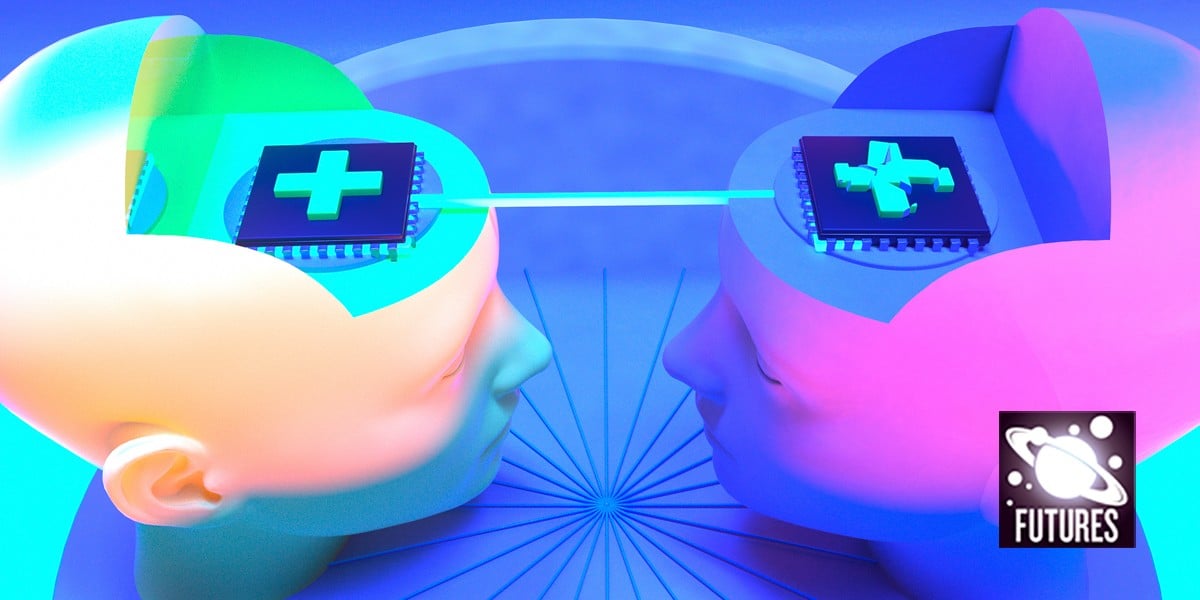
AI’s international research networks mapped
https://www.nature.com/articles/d41586-024-02986-2
A few key countries have become hubs of collaboration in artificial intelligence.
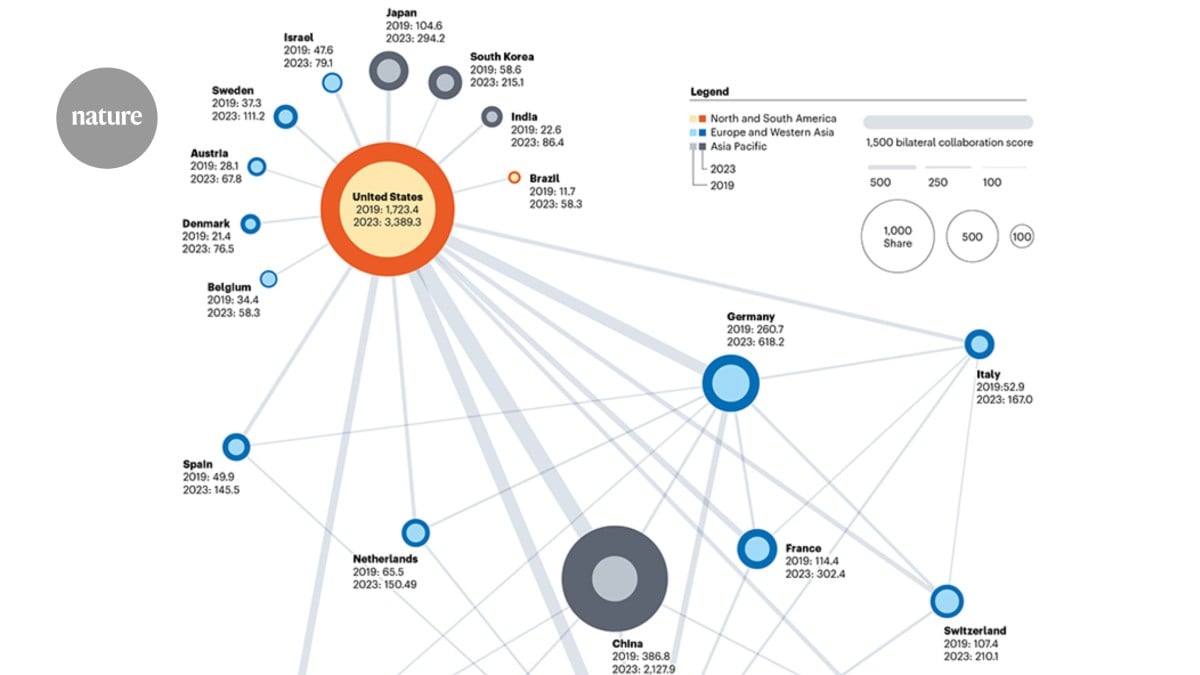
Colossal 'jets' shooting from a black hole defy physicists' theories
https://www.nature.com/articles/d41586-024-03071-4
Hear the biggest stories from the world of science | 18 September 2024

Rise of ChatGPT and other tools raises major questions for research
https://www.nature.com/articles/d41586-024-02984-4
AI is changing the way researchers work forever, but human expertise must continue to hold sway.
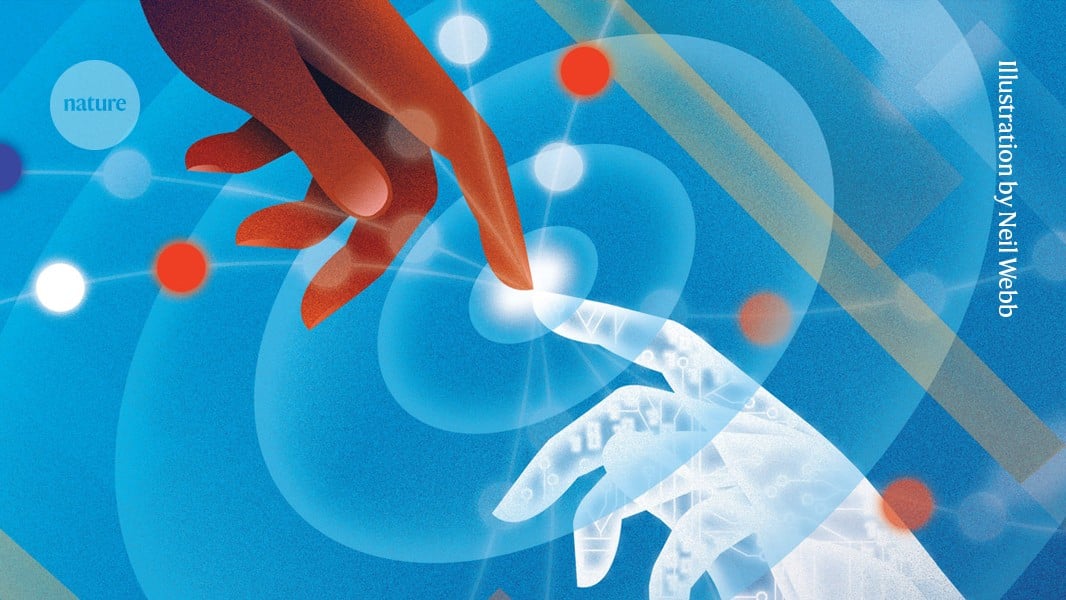
Opto-twistronic Hall effect in a three-dimensional spiral lattice | Nature
https://www.nature.com/articles/s41586-024-07949-1
Studies of moiré systems have explained the effect of superlattice modulations on their properties, demonstrating new correlated phases1. However, most experimental studies have focused on a few layers in two-dimensional systems. Extending twistronics to three dimensions, in which the twist extends into the third dimension, remains underexplored because of the challenges associated with the manual stacking of layers. Here we study three-dimensional twistronics using a self-assembled twisted spiral superlattice of multilayered WS2. Our findings show an opto-twistronic Hall effect driven by structural chirality and coherence length, modulated by the moiré potential of the spiral superlattice. This is an experimental manifestation of the noncommutative geometry of the system. We observe enhanced light–matter interactions and an altered dependence of the Hall coefficient on photon momentum. Our model suggests contributions from higher-order quantum geometric quantities to this observation, providing opportunities for designing quantum-materials-based optoelectronic lattices with large nonlinearities. Opto-twistronic Hall effect driven by structural chirality and coherence length is observed in a three-dimensional self-assembled twisted spiral superlattice of WS2.
